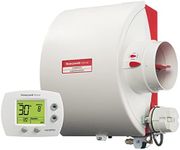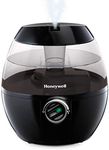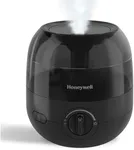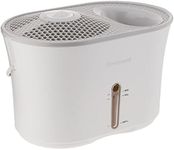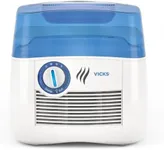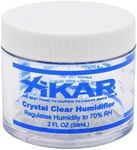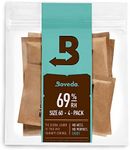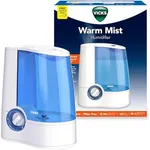Buying Guide for the Best Honeywell Humidifiers
Choosing the right humidifier can significantly improve the air quality in your home, making it more comfortable and healthier. When selecting a Honeywell humidifier, it's important to consider several key specifications to ensure you get the best fit for your needs. Understanding these specifications will help you make an informed decision and find a humidifier that meets your specific requirements.Room Size CoverageRoom size coverage indicates the maximum area that the humidifier can effectively humidify. This is important because using a humidifier that is too small for your room will not provide adequate humidity, while one that is too large may over-humidify and cause condensation issues. Room size coverage is usually measured in square feet. For small rooms (up to 300 sq. ft.), a compact humidifier is sufficient. Medium rooms (300-500 sq. ft.) require a mid-sized unit, while large rooms (over 500 sq. ft.) need a larger capacity humidifier. Choose a humidifier based on the size of the room where you plan to use it.
Water Tank CapacityWater tank capacity refers to the amount of water the humidifier can hold. This is important because it determines how long the humidifier can run before needing a refill. Smaller tanks (up to 1 gallon) are suitable for short-term use or smaller rooms, while larger tanks (1-3 gallons) are better for extended use or larger spaces. If you prefer less frequent refilling, opt for a humidifier with a larger tank capacity. Consider your daily routine and how often you are willing to refill the tank when making your choice.
Humidification MethodHumidification method refers to the technology the humidifier uses to add moisture to the air. The main types are evaporative, ultrasonic, and steam vaporizers. Evaporative humidifiers use a wick filter to absorb water and a fan to blow air through it, which is effective and energy-efficient. Ultrasonic humidifiers use high-frequency vibrations to produce a fine mist, which is quiet and ideal for bedrooms. Steam vaporizers boil water to create steam, which can help reduce bacteria and allergens. Choose a method based on your preferences for noise level, maintenance, and specific health needs.
Noise LevelNoise level is the amount of sound the humidifier produces while operating. This is important if you plan to use the humidifier in a bedroom, nursery, or office where quiet is essential. Noise levels are usually measured in decibels (dB). Ultrasonic humidifiers are typically the quietest, making them ideal for sensitive environments. Evaporative humidifiers may produce a gentle hum due to the fan, while steam vaporizers can be noisier due to the boiling process. Consider where you will use the humidifier and your tolerance for noise when selecting a model.
Ease of CleaningEase of cleaning refers to how simple it is to maintain and clean the humidifier. This is important because regular cleaning prevents mold, bacteria, and mineral buildup, ensuring the humidifier operates efficiently and safely. Look for models with removable and dishwasher-safe parts, wide tank openings for easy access, and clear cleaning instructions. If you prefer low-maintenance options, consider humidifiers with antimicrobial features or those that use disposable filters. Choose a humidifier that fits your cleaning preferences and schedule to ensure it remains hygienic and effective.
Additional FeaturesAdditional features can enhance the functionality and convenience of the humidifier. Common features include adjustable humidity settings, timers, auto shut-off, and built-in hygrometers. Adjustable humidity settings allow you to control the moisture level to your preference. Timers and auto shut-off provide convenience and safety by turning the unit off after a set period or when the tank is empty. Built-in hygrometers measure the room's humidity level, helping you maintain optimal conditions. Consider which features are important to you and how they can improve your user experience when choosing a humidifier.
